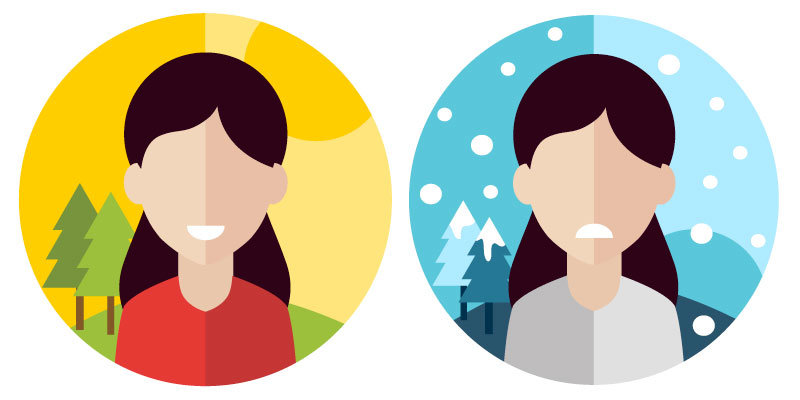
“ Although the world is full of suffering, it is also full of the overcoming of it.“
- Helen Keller
S.A.D. 101:
While there are many wonderful things about living in Canada, winter isn’t one of them. The long nights and cabin-fever inducing cold are enough to bring anyone down. When “down” becomes severe enough to affect your quality of life, however, it could be something else.
Seasonal Affective Disorder is a type of depression that happens in the winter. Symptoms tend to last from late Fall to early spring. You feel better in the spring and forget about it till Fall comes around, again.
2-6% of Canadians will develop Seasonal Affective Disorder in their lifetimes, but certain groups are at higher risk. You’re more likely to develop S.A.D. if:
- You’re between 20 and 50
- You’re female (women are 8X more likely)
- You have a family history of S.A.D
What SAD Looks Like:
A lot of us get the “winter blues” or the ”February blahs.” S.A.D. is more severe. It looks and feels different than the winter blues. Here are some common symptoms:
- Having low energy and feeling sluggish
- Wanting to sleep more (often by 2-4 hours a day)
- Craving carbohydrates and gaining weight
- Withdrawing from friends
- Feeling depressed for 2 winters in a row, but feeling better during the summer months
- Lower than normal sex drive
If it’s happening to a friend or loved one, you’ll be able to tell the difference between the blues and a real depressive condition. They will withdraw from activities, might put on weight, and won’t be interested in the things that normally make them perk up.
Talk to them about it. People with depression often suffer in silence. If it’s someone near to you, be the voice that breaks the silence. If it’s happening to you, be strong enough to ask for help.
What You Can Do:
Light therapy is one of the most common treatments, providing anti-depressant relief to 70% of sufferers. It involves exposing yourself to a special type of bright light (not ordinary household lights). Your doctor will be able to advise if light treatment is right for you.
Try to get outside, even for a 10 minute walk and even if you just want to curl up in bed. Getting tired muscles moving and blood circulating can have a big impact on mood.
Just because you’re craving carbs doesn’t mean you have to give in. Provide healthier snack options for yourself, like plain popcorn or banana chips.
Try to create some time to take care of yourself, even if it’s as simple as a bath before bed. Between work and kids and everything else, it’s hard to carve out a half hour for ourselves, but it could make a world of difference in your mood.
If you’re struggling, a visit to your doctor can help put things in perspective. He or she will chat with you about your symptoms and help you create a plan of how to move forward.
Sources:
https://www.mooddisorders.ca/faq/seasonal-affective-disorder-sad#t10n534